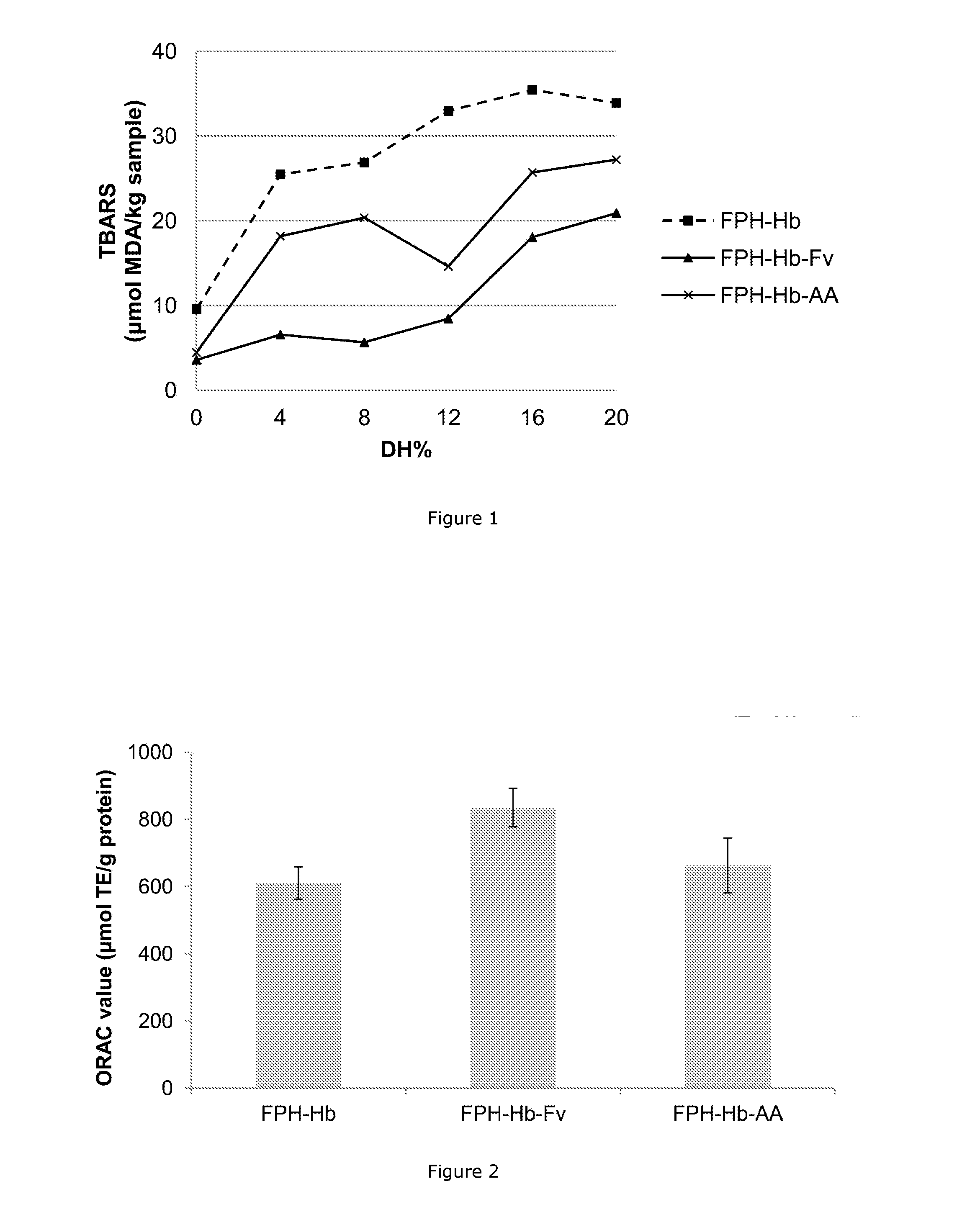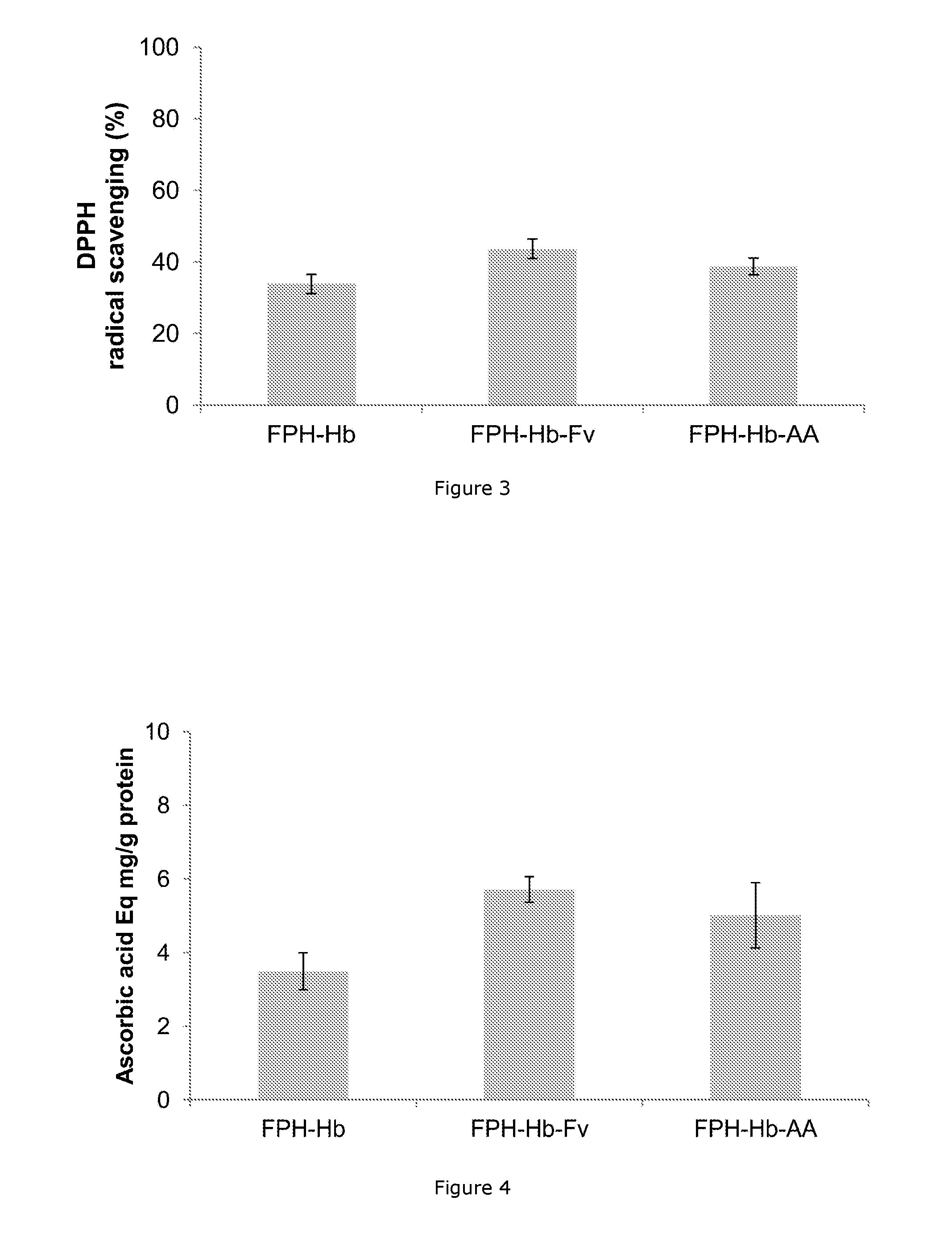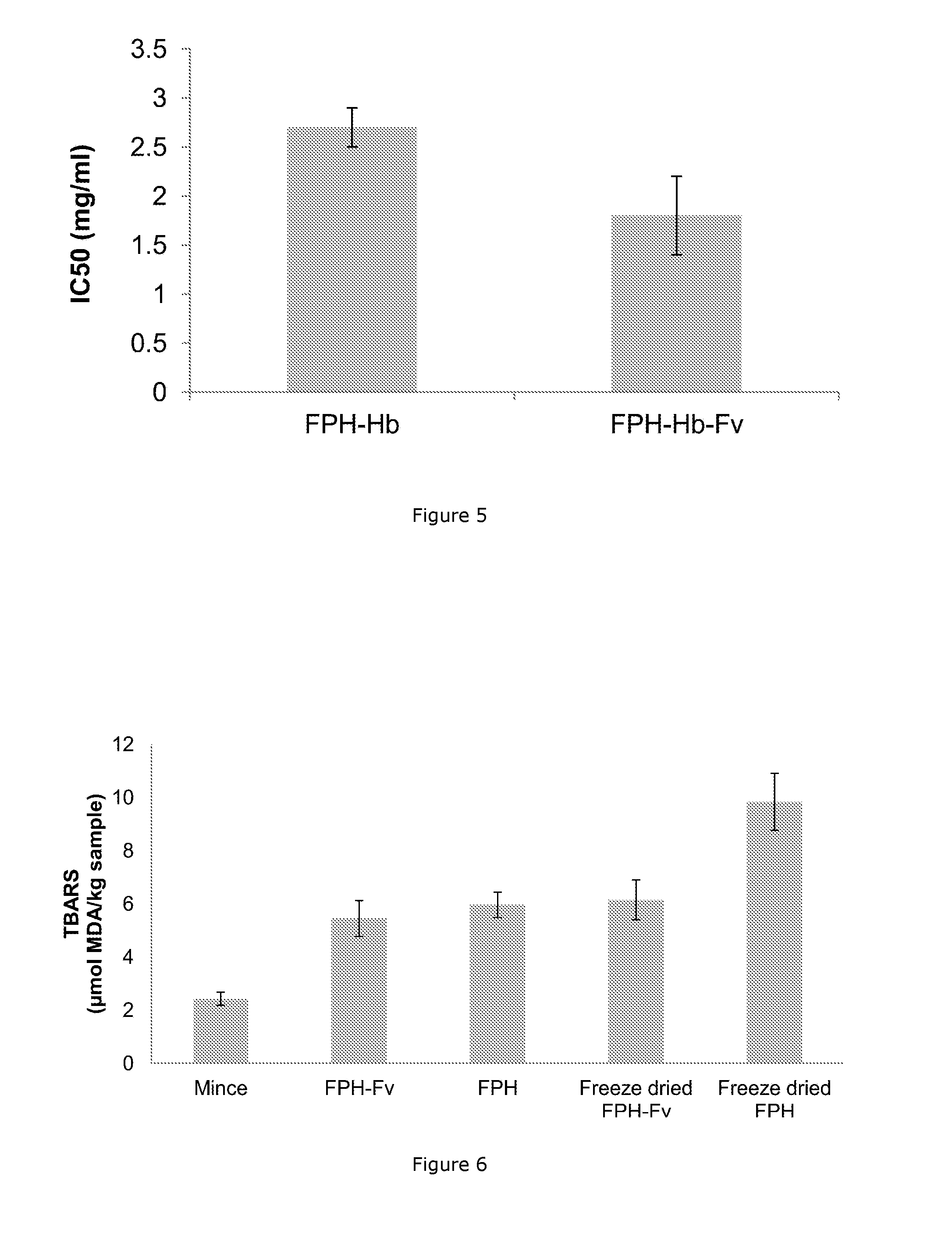Use of natural antioxidants during enzymatic hydrolysis of aquatic protein to obtain high quality aquatic protein hydrolysates
a technology of enzymatic hydrolysis and antioxidants, applied in the field of protein hydrolysates, can solve the problems of high oxidative instability of bioactive aquatic protein ingredients, major quality deterioration, loss of nutritional value, strong off-odor and flavor, etc., and achieves positive health effects, high quality, and negative effects on bioactivity
- Summary
- Abstract
- Description
- Claims
- Application Information
AI Technical Summary
Benefits of technology
Problems solved by technology
Method used
Image
Examples
example 1
The Effect of Natural Antioxidants on Haemoglobin-Mediated Lipid Oxidation During Enzymatic Hydrolysis of Cod Protein
[0067]Materials
[0068]Fresh cod (Gadus morhua) fillets used for the preparation of the washed cod model were obtained iced from Marland Ltd. (Reykjavík, Iceland) within 24-48 h of the time of catch. The fillets were skinned and all dark muscle, blood spots and excess connective tissue were removed. The white muscle was minced in a grinder (plate hole diameter 4.5 mm). The enzyme Protease P “Amano” 6 was provided by Amano enzyme company, Japan. The brown algae (Phaeophyta) Fucus vesiculosus (Linnaeus) used for the preparation of seaweed extractions was collected in the Hvassahraun coastal area near Hafnarfjörur, in South-west Iceland in October 2008. The seaweeds were washed with clean seawater to remove epiphytes and sand attached to the surface and transported to the laboratory. The samples were carefully rinsed with tap water. Small pieces were cut and then freeze dr...
example 2
Effect of Fucus vesiculosus Extract on Lipid Oxidation During Hydrolysis of Fish Protein
[0101]MPF Island ehf. (Grindavik) provided cod mince from byproducts (cod frames) produced in January 2011. The cod mince was diluted in water to 3.7% protein and adjusted to pH 8 with 2 M NaOH. It was divided in to two 1 L portions, one containing 240 ppm seaweed extract (52.9 PGE / 100 g extract) (FPH+seaweed) and the other not (FPH). The material was subjected to enzyme (protease P “Amano” 6) for hydrolysis to achieve 20% degrees of hydrolysis (% DH). The samples were freeze dried and stored in −20° C. until analyzed. Enzymatic hydrolysation, preparation of Fucus vesiculosus EtOAc fraction, measurement of total phlorotannin content, lipid hydroperoxides, TBARS and ORAC analysis were according to the methods described in Example 1.
[0102]Sensory Evaluation
[0103]Protein solutions were prepared from FPH and FPH+seaweed. 15 g of freeze dried protein powder was mixed with distilled water up to 250 mL....
PUM
| Property | Measurement | Unit |
|---|---|---|
| temperature | aaaaa | aaaaa |
| temperature | aaaaa | aaaaa |
| molecular weight | aaaaa | aaaaa |
Abstract
Description
Claims
Application Information
 Login to View More
Login to View More - R&D
- Intellectual Property
- Life Sciences
- Materials
- Tech Scout
- Unparalleled Data Quality
- Higher Quality Content
- 60% Fewer Hallucinations
Browse by: Latest US Patents, China's latest patents, Technical Efficacy Thesaurus, Application Domain, Technology Topic, Popular Technical Reports.
© 2025 PatSnap. All rights reserved.Legal|Privacy policy|Modern Slavery Act Transparency Statement|Sitemap|About US| Contact US: help@patsnap.com



